Two-story country houses: projects and examples

For many, a two-storey country house is a place where you can recuperate, relieve stress, put your thoughts in order, and have a good time with your family. In this article, we will look at various layout options for a small garden house with 2 floors.
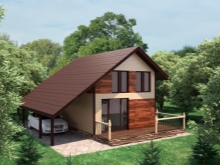
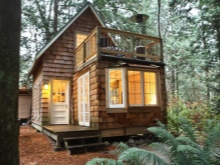

Peculiarities
If you are a fan of inviting friends to visit or you have a large family, and the area of the summer cottage is small, we advise you to take a closer look at the cottage in 2 floors. It is not only profitable when buying, but also when arranging, because 1 m2 can double the size of the usable area. Among the two-storey country houses, buildings of 4x6 meters are popular. In real life, they look beautiful, stylish, and are inexpensive. Moreover, houses with such a layout keep warm well. This is a great advantage for those who travel to the country in winter.
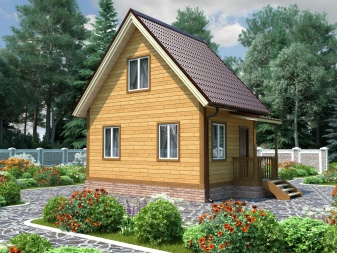
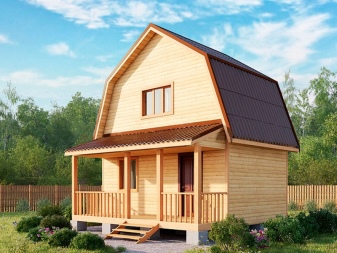
According to experts, the most popular option among country houses is a log cottage. The material insulates the house, makes it comfortable and cozy. Many people choose it as a building material due to environmental friendliness and safety. The beam is easy to use and makes it easy to create a two-storey country house.
In addition, timber is a fairly economical option.
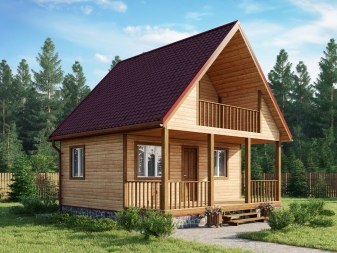
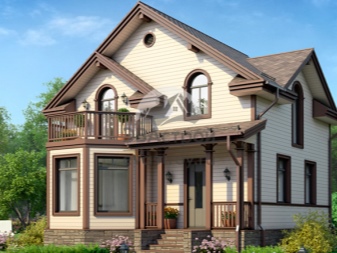
Building layout
Planning the structure of the house, the location of rooms and utility rooms is, of course, one of the key points when arranging a summer cottage. A building project with a plan implies a discussion and approval of the architectural (diagrams and drawings) and constructive (materials and foundation) sections. The effective arrangement of rooms allows you to immediately determine what materials will need to be used in a particular area and in what quantity. For roomy houses, masters advise the following sizes: 8x8 m, 10x10 m and more.
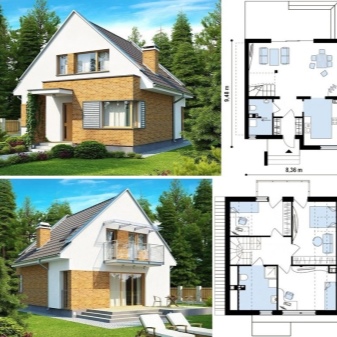
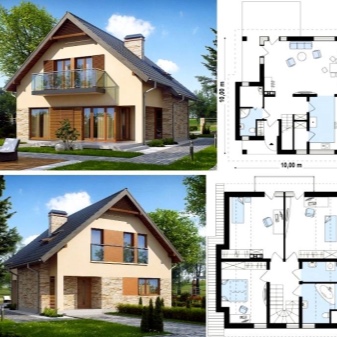
The layout of the cottage depends on the personal preferences of the owner. But if we consider the general trends, then we can determine the approximate scheme of the most convenient two-story summer cottages. In most cases, a dressing room, kitchen, bathroom and living room are located on the ground floor. During construction, this makes it more convenient to conduct water, gas and sewage. In the case of inviting intruders to tea, you do not have to accompany them throughout the house.
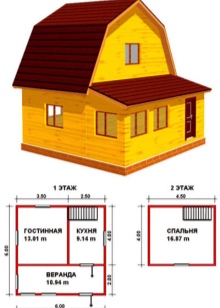
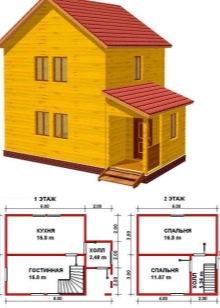
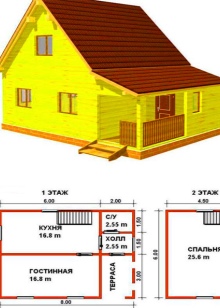
The corridor leading to the hotel may not have a door and is connected to the room with an arch, which allows you to free up and decorate the space. Small country houses with studio rooms on the ground floor are popular. This option involves connecting the living room and the kitchen. Additional extensions to a small country house can be:
- attic or mezzanine;
- bay window, balconies and loggias;
- veranda or terrace.
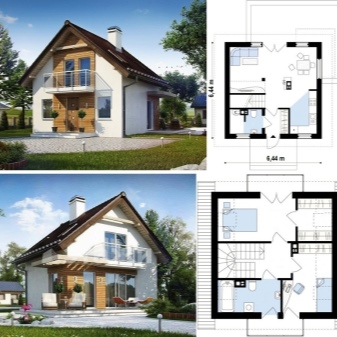

In fine weather, such an open-type room is perfect for a relaxing time with a cup of tea. Also, a balcony, loggia or terrace can be decorated with flowers. On the second floor of the house, rooms such as a bedroom, a private office, and a nursery are most often placed. Typical projects include the installation of windows with thermal insulation material. Loft-type living space, attic or mezzanine will be a small "third floor". However, sometimes they are built instead of the second, significantly increasing in size.
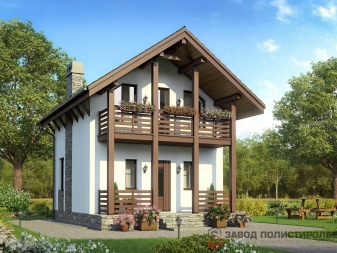
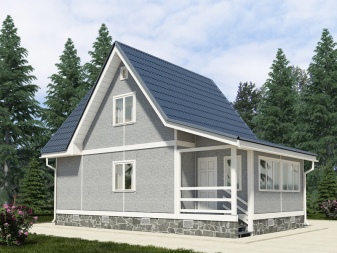
You can increase the internal space of a 2-storey house using a bay window, balcony or loggia. The glazed bay window along the entire perimeter improves illumination. It is not separated, like a balcony, from the room and from the outside it always has a roof.
A 2-story bay window makes your garden house look like a castle.
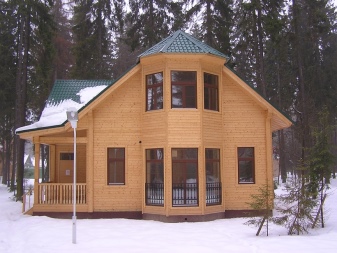
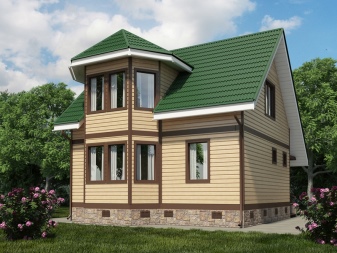
Material selection
Immediately after the approval of the drawing, the selection of materials follows. This is an important point on which the strength and the final cost of the building depend. Each material has its own advantages and disadvantages.
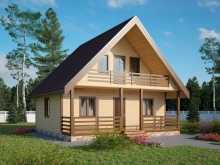
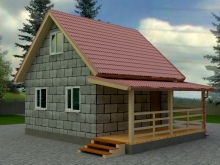
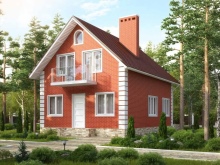
Beams
This is the simplest economy class option. Massive timber contains a lot of moisture, it can be uneven. This is the reason why a house has to withstand before being refurbished from the inside. There is a profiled timber that resembles a constructor. With its help, the risk of crevices is reduced. Glued laminated timber has less moisture, after its construction, you can immediately start finishing the house.
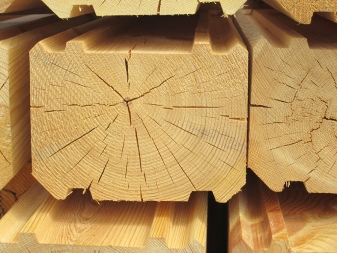
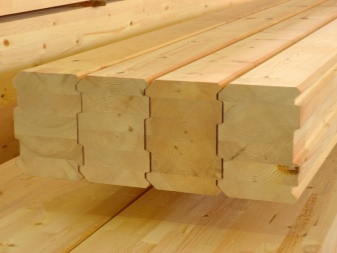
Country houses made of wooden beams, properly treated with the necessary means against decay and ultraviolet radiation, are the most environmentally friendly. They look natural and noble. However, such houses are not recommended to be loaded on the second floor due to the lower strength of the material, compared to bricks and blocks.
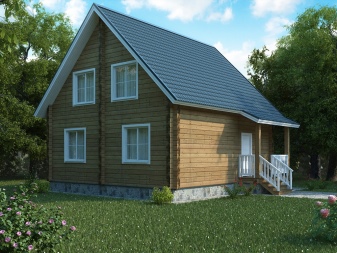
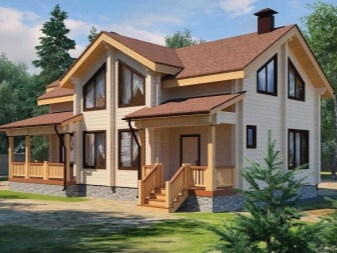
Blocks
They consist of lightweight concrete and have good thermal insulation. The blocks are convenient for installation and cheaper than bricks. They are also lighter, which reduces the load on the base of the house. There are different types of blocks: foam concrete, aerated concrete, sand blocks, heat blocks, wood concrete, ceramic blocks, Balaev blocks and others. They all have different costs and have their own pros and cons. Again, when choosing blocks of one type or another, rely on the drawing of your house and the natural features of your site.
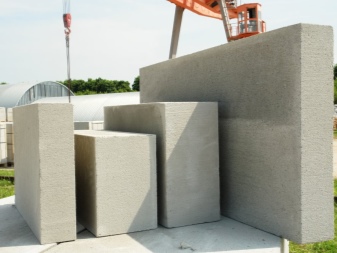


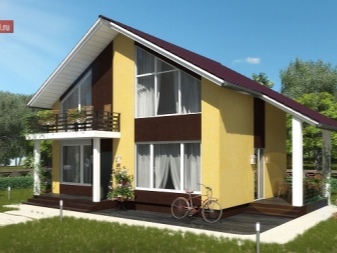
Brick
Popular in the building materials market for external presentability and durability. Bricks, depending on the structure and the presence of "decorations" for the facade, are:
- full-bodied;
- hollow;
- facing;
- fireclay;
- porous;
- ceramic and others.
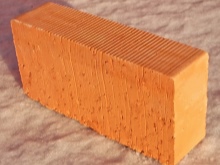
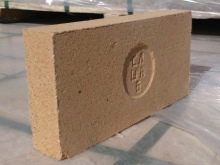
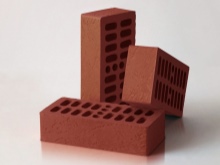
The material itself allows the house to stand, subject to construction technology, for more than a hundred years. Therefore, buildings made of such material are considered the most durable. Eco-friendly, frost-resistant brick is also well suited for decoration. It is also chosen for its high fire resistance.
However, if you decide to build a brick house, be aware that most of its types are expensive and quite heavy, which affects the choice of the foundation.
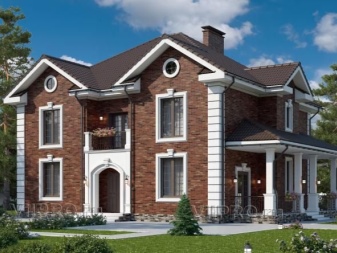
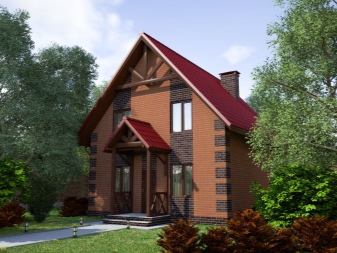
Foundation for a summer residence
Any house, even a small one, must have a good foundation. The strength of the foundation affects how many years a building can stand, as well as the safety of the structure itself. The most popular are the following types of foundations:
- columnar;
- tape;
- pile-screw.

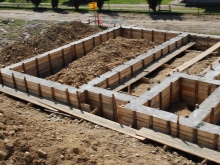
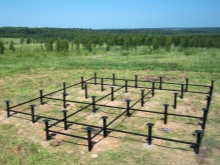
The columnar foundation does not allow overloading a building, especially a two-story one. The taphole base copes with the loads better. The pile-screw foundation is convenient for fast constructions, it is also quite durable, it belongs to the budget options. Waterproofing should be done before installing any base. Thus, if you have a small suburban land space, but want to get a large living area without increasing the perimeter of the building, take a closer look at a house of 2 floors.
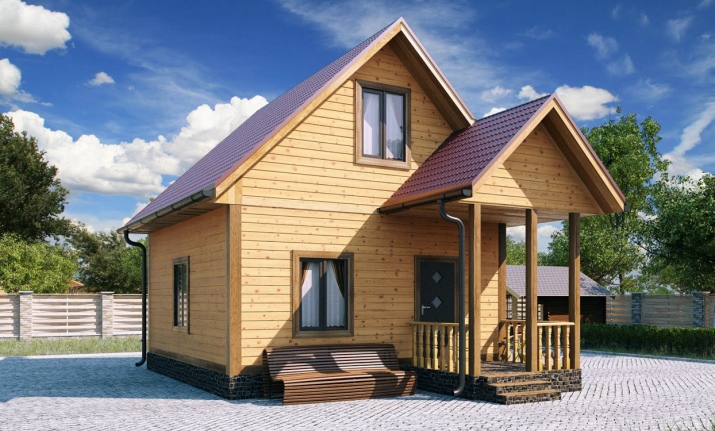
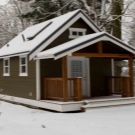
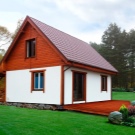
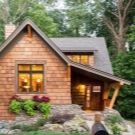
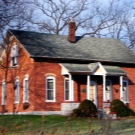
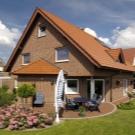





























































The comment was sent successfully.